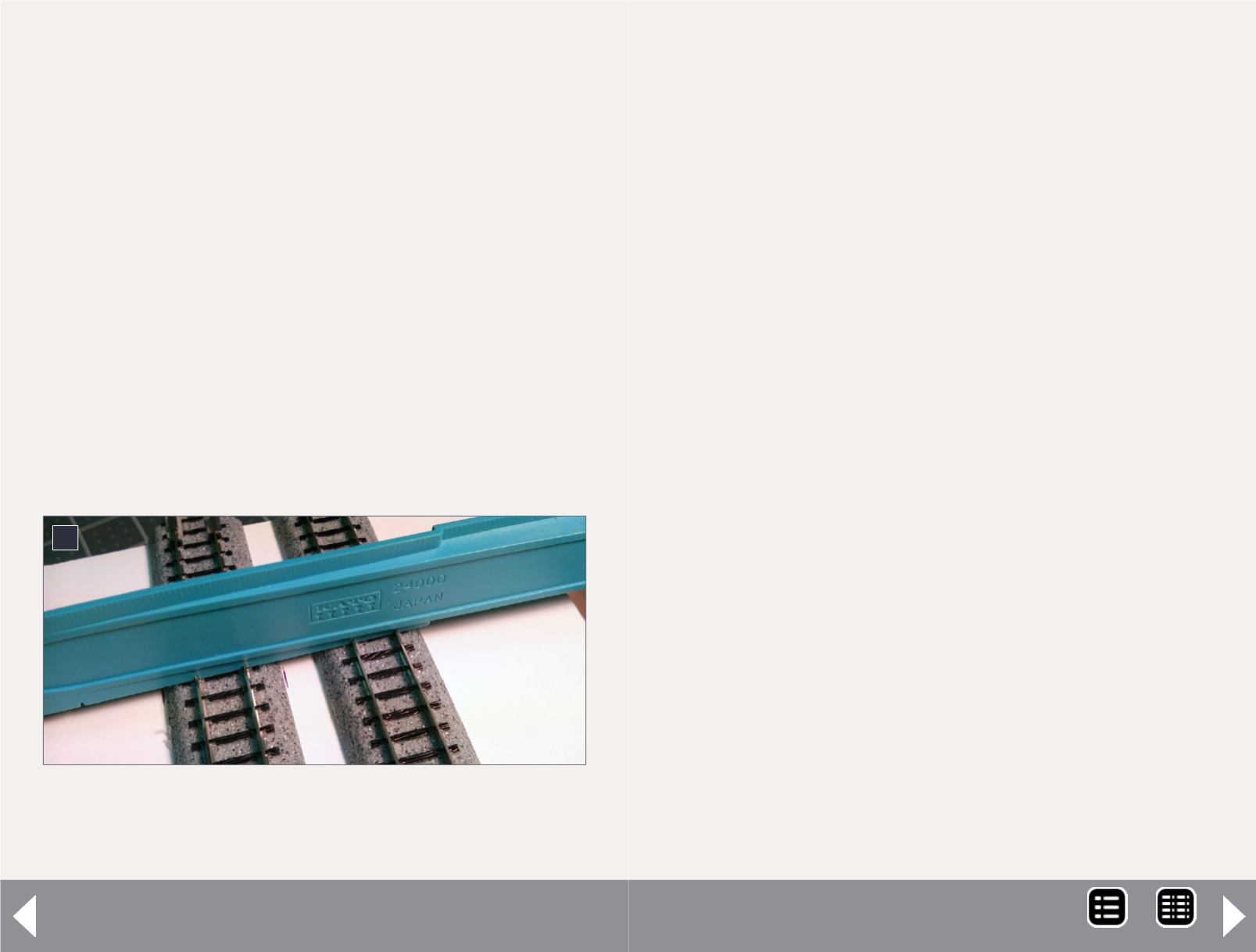
And, of course, nothing needs to go to waste. There are more
things to do with the scraps:
Bracing, if you’re worried that foam-core is going to be too
flimsy, you can glue strips underneath your module to keep it
stiff and straight. That hasn’t been necessary in my area, and
I have no experience in moisture-laden east-coast environ-
ments, but I’m guessing that the foam material is structurally
stable and won’t warp due to humidity. Still, it won’t hurt for
larger (corner) modules to have some help, if you’re con-
cerned about sagging.
Basic landscaping and scenery: Retaining walls, module edg-
es, streets, etc.
Costing it out
Let’s start to pencil-out a plan, and see how it fits into our bud-
get. My crystal ball is in the shop for repairs, so I can’t read your
mind about what kind of trains you’re thinking about. We’ll set
$500 layout 3rd place - 7
9. With the first track in place, use the Kato rerailer to
position a second track – if you’re going to have any
double track – at exact the right position.
9
aside $170 for that, leaving a nice round $330 for the rest of the
project. (I’m also going to assume, for beginners – and this may
seem heresy to some – we’ll go with simple DC operation, on
the assumption that this layout is for single-train operation. DCC
is nice, but an added complexity, and added cost. I’d rather not
discourage new modelers with the complexity and cost of DCC.
Remember, we’ve sworn off be-all and end-all for this enterprise;
it’s all about experimentation on a budget!
The track plan, too, has a lot of flexibility. A simple roundy-
roundy loop that fits on a tabletop (okay, maybe the dining
room table, with the extensions put in) might consist of eight
single modules and four corner modules at a cost of around
$28 for the modules, and another $23 for the track. Of course,
that’s not very interesting for most, so tossing in four switches
for some switching activity brings this price up by around $100.
(That’s assuming the more-expensive #4 switches; #6 switches
don’t fit as neatly onto the standard module size.) If, point-
to-point is where your curiosity lies, keep the eight regular
modules, and trade two or three corner modules for three or
four more simple straight modules. That’s a not-too-shabby
shelf-top situation, again for the same money. Let’s put aside
another $173 for the track, regardless of what you pick, real-
izing that you can substitute standard modules, or even insert
new ones later, as you get a better sense of what you want.
When it comes to laying track, you have choices, too. You can
buy the electrical leads (KATO 24-828) and place them on sev-
eral modules. If you have switches, you’ll generally need power
on all sides of the switch, but these quickly become pricey. If
you’re up on your soldering (really, a simple skill to learn if you
follow a few basic tips), you can solder leads to the outside of
the rails where you want to put power, and spare the expense
of buying those rail leads. Another point: going with Kato parts
MRH-Oct 2014


